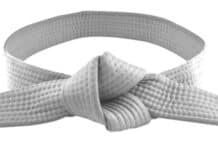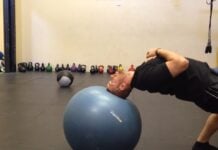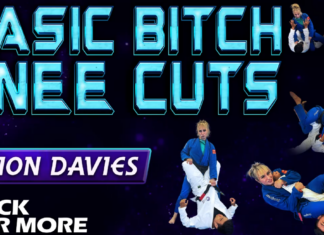
Strength Training For Jiu-Jitsu is usually a huge puzzle for most people. Should you do bodybuilding-like exercises or opt for a powerlifting approach. How about Olympic lifting? What if you only want to do bodyweight training and you’re into gymnastic-style strength exercises? All in all, the world of strength training is so vast that there is no simple right or wrong answer when it comes to getting stronger for BJJ. There are, however, certain exercises that will universally work for everyone. We take a look at four of them in this article.
People that train BJJ usually train other things as well, especially when they start competing. While supplemental training is generally a good idea, it also has to be carefully programmed. This programming has to focus on the intensity and volume of training, as well as the selection of exercises that actually have a carryover effect on the sport. What I mean by that is that there’s no point in lifting some insane amount of weight with calf raises, because you’ll never have to use it in the context of BJJ. Strength training for Jiu-Jitsu should be very specific and precise.
The Secret Of Strength Training For Jiu-Jitsu: Developing A Strong Core
What is the one thing you need to focus on with your strength training for Jiu-Jitsu? Your core. And let’s just be clear about something. The core does not just refer to the abs. In fact, your abdominal muscles are just a part of the muscle groups that make up the core. The other muscle groups that “pitch-in” are the shoulders, lower back, upper back, thighs, and glutes. As you can see, this just about covers all the major muscle groups in the body.
Let me keep demystifying the “core” for you. The reason most strength coaches and fitness experts swear by the core is simple – the muscle groups that we refer to by that name all work in unison to help us with key functions which include flexion, extension, torsion, and stabilization of the trunk. In another word, when people refer to movements that make the body work as a whole, they refer to movements that include the core. The reason for this is that the core is what connects all the muscle groups in the boy, allowing them to help each other when performing athletic activities.
The only logical conclusion from there is that core training is the most important aspect of strength training for Jiu-Jitsu, and strength training in general, to be honest. When it comes to developing core muscles used to both the rigors and the movement patterns of Jiu-Jitsu, certain exercises are much better than others.
The 4 Best Exercises You Need To Be Doing
Training the core comes in many forms, and all of them are more or less helpful. However, when it comes to specific strength training for Jiu-Jitsu, there are four core exercises that won’t just make you stronger and help you learn to use your body as one unit, but they also have a direct carryover effect to grappling.
#1. The Walrus
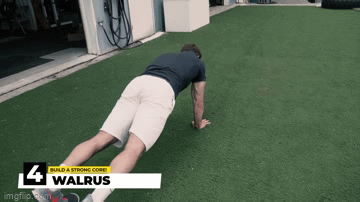
Benefits: This is an exercise that involves a full range of motion for the shoulders. At the same time, it teaches you how to stabilize your body, given that you’re basically in a plank position all of the time. Of course, there’s also a dynamic strength component given the movement of the arms.
Carryover effects: The overhead reaching motion is very similar to pummeling when standing, or different grip fighting situations, especially when you are in top position.
#2. Ab Wheel Rollouts
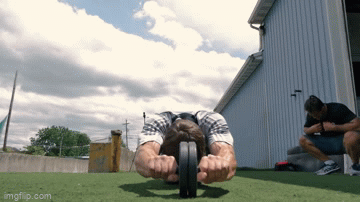
Benefits: This exercise helps lengthens the upper body via thoracic extensions. That is something not many exercises can accomplish. At the same time, it helps develop better stability of the trunk. The contraction phase means you are working both on rapid and slow contraction, providing you with lots of control over the motion.
Carryover effects: You spend a lot of time in the overhead position which is a crucial one in BJJ. Ther;’s direct translation to battling for collar ties, working off your back as well as scrambling for takedowns.
#3. Medicine Ball Slams
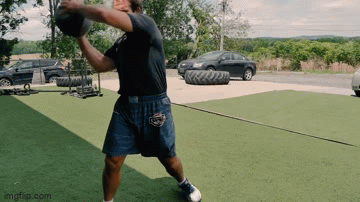
Benefits: Lots of shoulder involvement in three directions, helps develop dynamic control of the trunk, and develops speed-strength, a key ability for athletes.
Carryover effects: Mat control. The dynamic control you get from this exercise means you will be able to control scramble situations and improve your control in pins, especially when you’re holding someone in front of you, which, in grappling, is most of the time.
#4. Pause Front Squats
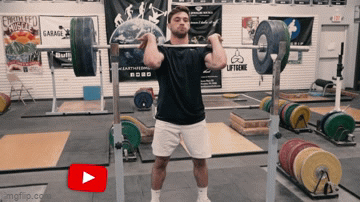
Benefits: This exercise develops extreme explosive power due to the pause effect. Pausing at the bottom removes the bounce effect which means you have to use your core to explode back up. Apart from developing overall core strength, the pause front squad also develops driving power as well.
Carryover effects: Irreplecable for developing driving power that is necessary for takedown setups and guard retention and recovery.
Putting It All Together
YOu can pretty much organize these exercises any way you want. The easiest way would be to do them on separate days, after BJJ training, if you have access to the appropriate equipment. You could also do the mas straight sets, although training them in a circuit fashion will give you the most bang for your buck. If you can stomach it.
Organizing your strength training for Jiu-Jitsu means you should be covering different athletic qualities at the same time. That means that repetitions should be kept in the 8-12 reps range, depending on the exercise. With the pause front squats, you can even go as low as 6 if you are using heavier weights. For the walrus, you should be going for distance or time. while the ab wheel and medicine ball slams are perfect when done in 8-12 reps. Anywhere from 3 to 6 sets is great, depending on your overall conditioning.
When it comes to how many times a week you should do strength training for Jiu-Jitsu, given that there are lots of muscle groups involved in these exercises, the ideal frequency is twice a week, preferably with at least two days of rest in between.
Conclusion
There is no need to overcomplicate strength training for Jiu-Jitsu. Keep it simple and focus on what matters, like the muscles of the core. With these four exercises, you work every muscle group that is important for grappling. More importantly, you get to do it in an efficient and time-saving way.















